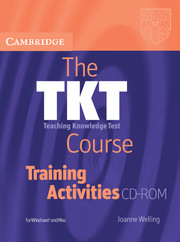3.6 - Correction traffic lights
Published online by Cambridge University Press: 09 February 2024
Summary
Instructions
1. Hand out the background information to each trainee, and ask a few comprehension questions. Explain that in the next activity, you will look at a piece of written work by this learner. Explain that the activity focuses on the way teachers correct written mistakes.
2. Hand out the correction code to each trainee, or elicit symbols for the items on the correction code and make sure that all the trainees are familiar with the symbols.
3. Divide the class into three groups (or multiples of three if the group is very large). Elicit the colours of traffic lights (red, amber and green), and assign a colour to each group.
4. Explain that each group will correct the same piece of work but in different ways. The colour of their group will dictate how they will correct the work. The green group are ‘given the green light’ to correct all the errors; the amber group will be quite cautious in correcting the errors and the red group will be very cautious.
5. Hand out the appropriate correction instructions, a copy of the writing sample on a transparency, and a red, orange (amber) or green pen as appropriate to each group. Hand out a copy of the writing sample to each trainee. Explain that each group should make their corrections on the transparency.
6. Allow ten minutes for the groups to complete their work.
7. Collect in the transparencies from the different groups and use the projector to show the differences between the corrections by laying the transparencies on top of each other, as well as displaying them individually.
8. Conduct feedback on factors to consider when making corrections. Draw out the following:
• the need to motivate and not demotivate the learner
• identifying slips versus developmental errors
• the role of self- or peer-correction
• the need to take into account learner needs, expectations and previous learning experience
• grading work for accuracy and/or fluency
• alternative strategies for tackling errors
- Type
- Chapter
- Information
- The TKT Course Training Activities , pp. 78 - 80Publisher: Cambridge University PressFirst published in: 2024

